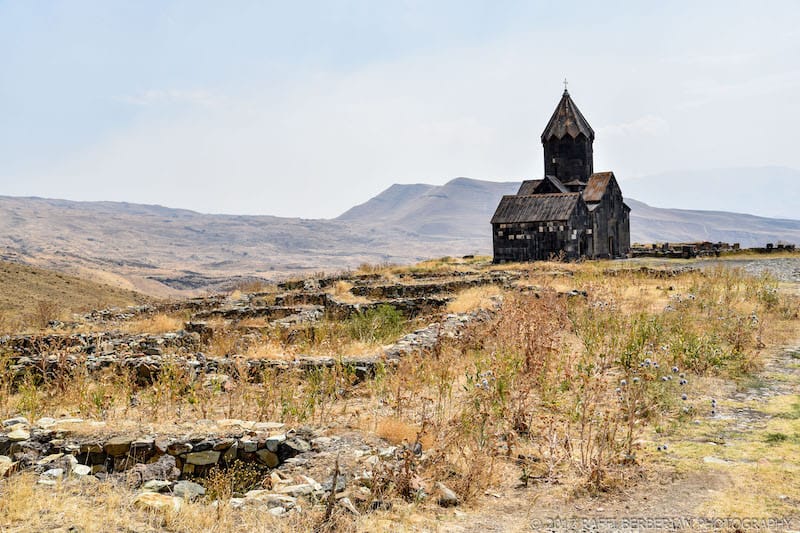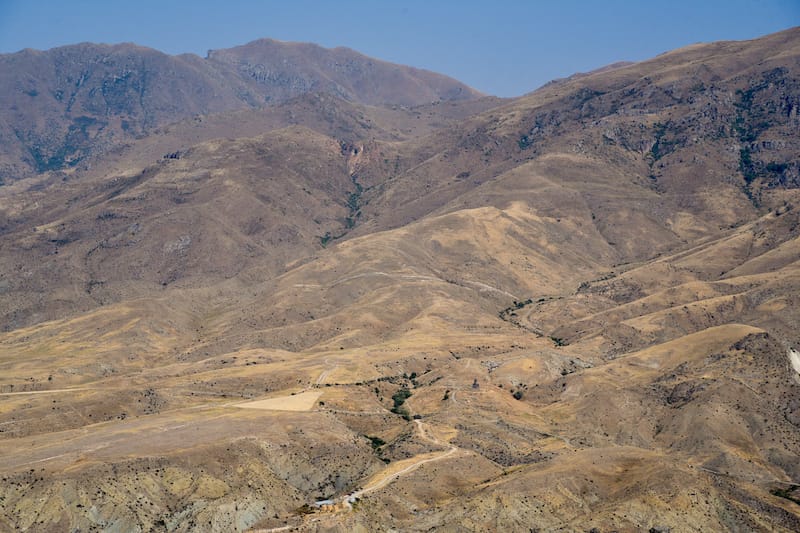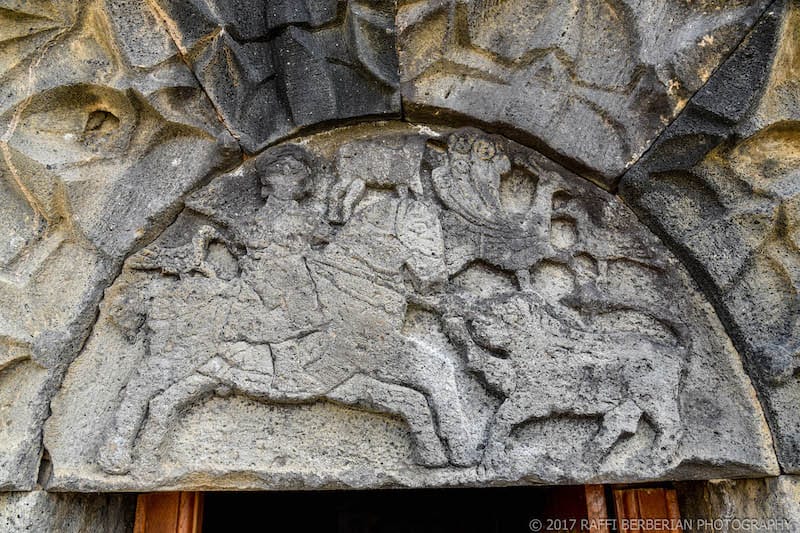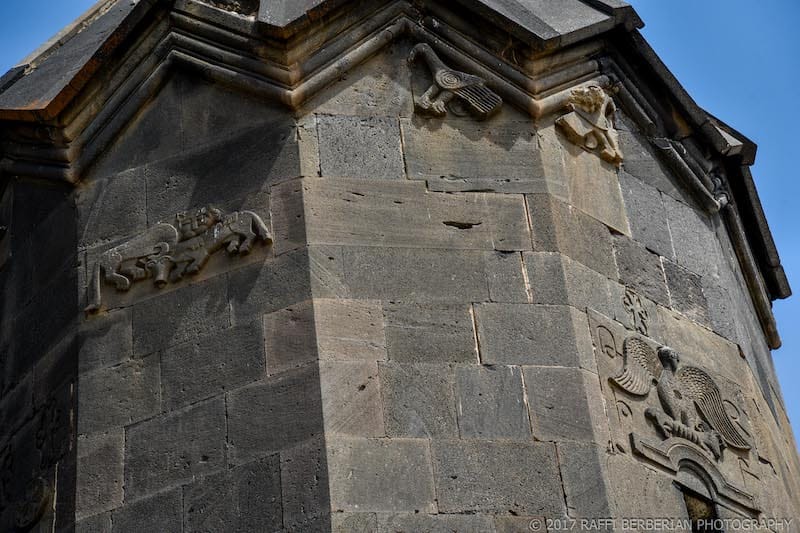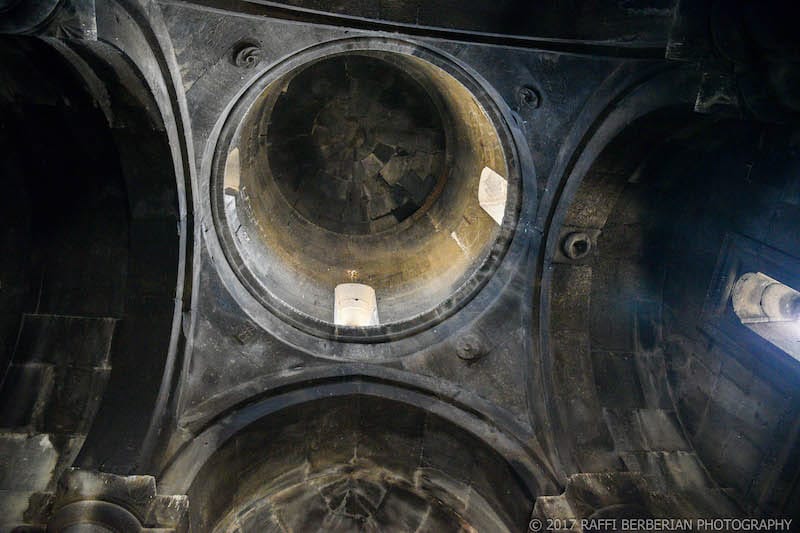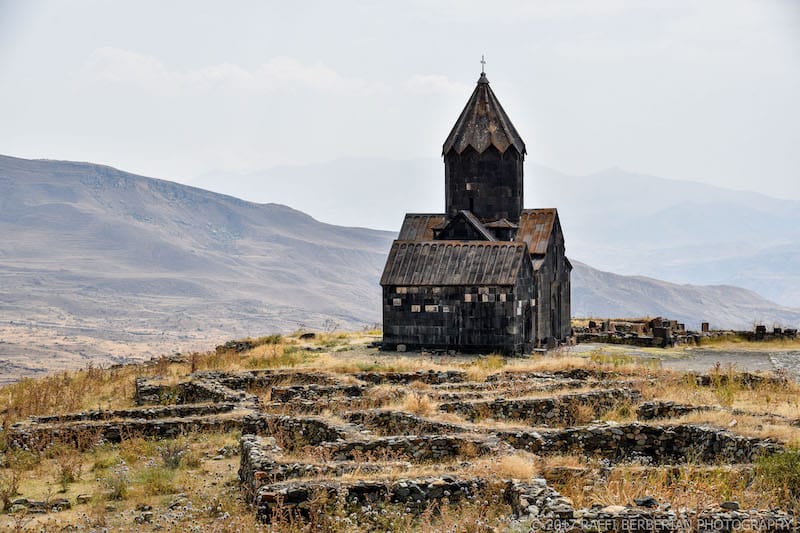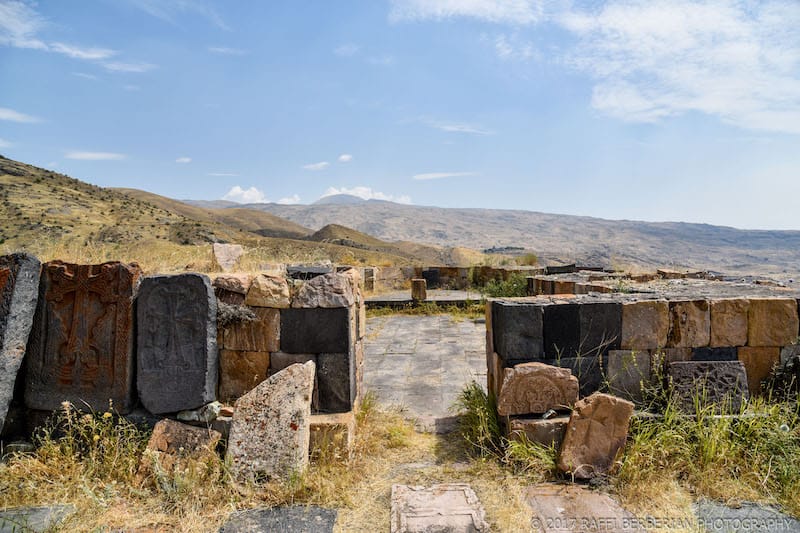Last Updated on June 16, 2025 by Aram Vardanyan
Isolated but not hard to reach, Tanahat Monastery is a beautiful place to visit in the Vayots Dzor Province and is a great stop if you are driving to Syunik! It is known to be one of the oldest churches in Armenia.
What remains of the Tanahat Monastery are the Saint Stepanos and Saint Nshan (Holy Sign) churches, both from the 13th century. However, according to the famous medieval Armenian historian Stepanos Orbelian, the monastery was founded in the 8th century.
The Famous Armenian music theorist and Greek translator Stepanos Syunetsi was buried in the monastery in 735, and a chapel was built.
Surb Stepanos (St. Stephen) church was built in place of the chapel from 1273 to 1279 by the Proshian family. The church was built of dark blue polished basalt stone and it has decorative carvings that are among the finest of the Armenian medieval period!
On the south in the center of the drum, you can see the Proshian family crest of an eagle with lamb in its claws. Above that, directly below the roof are a couple of birds of paradise. Closer to the western side of the drum is the Orbelian crest of lion and bull.
Closer to the bottom of the church on the main structure, there are more carvings of a bird of paradise and a sundial.
To the north of Surb Stepanos, connected directly to the left, is the single nave Surb Nshan (Holy Sign) church, also built-in polished basalt stone. There aren’t many decorations on it but do not miss the bas-relief carving above the entry which depicts a hunting scene.
To the north and south, and really all around the monastery, there are foundations of ruined buildings. Most notably, to the south, are the foundations of a small 5th-century basilica that was excavated in the 1970s. It is around here that you will find some beautiful khachkars.
Take some time to walk around the entire site and amongst the ruins and you are sure to find something interesting!
Finally, you cannot talk about the Tanahat monastery without mentioning the famous Glazdor University. It is believed that the monastery was the site of Gladzor University, a prominent and very important educational institution in Medieval Armenia.
Gladzor University was established around 1280 by Nerses of Mush and thrived until the 1340s. It was considered one of the two “great centers of learning” along with the University of Tatev (1340-1425).
Some of the famous students of Gladzor include the historian Stepanos Orbelian, the philosophers Yesayi Nchetsi and Hovhan Vorotnetsi, the architect Momik and the miniature painters Toros Taronatsi and Avag.
You can visit a small museum, established in the Church of St. Hagop of Vernashen village which is dedicated to the university.
How to Get to Tanahat Monastery
Tanahat Monstery is located less than 10 kilometers away from Yeghegnadzor by car after you pass the village of Gladzor.
If you are not renting a car (which is a great option to travel throughout the region), then you need to get from Yerevan to Yeghegnadzor by public transportation from Kilikia Bus Station.
Alternatively, you can travel to Tanahat Monastery by taxi, or take a taxi from Yeghegnadzor to the monastery. A taxi all the way from Yerevan costs about 14000 AMD. A taxi from Yerevan to Yeghegnadzor costs 13000 AMD approximately.
We definitely think that Tanahat Monastery is one of the best places to visit in Armenia! We hope that you add this monstery to your itinerary in Armenia.
Please let us know if you have any tips or recommendations!

